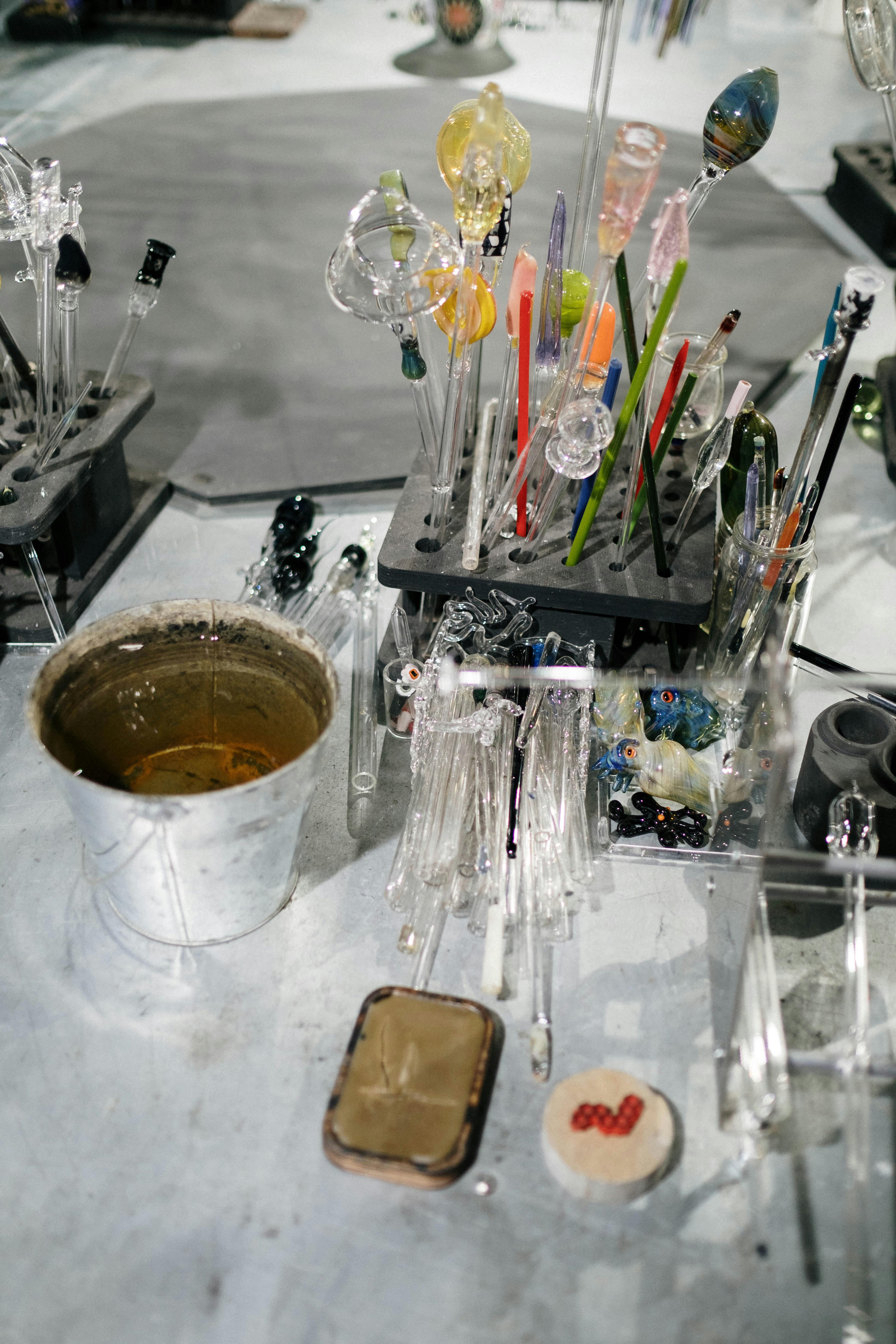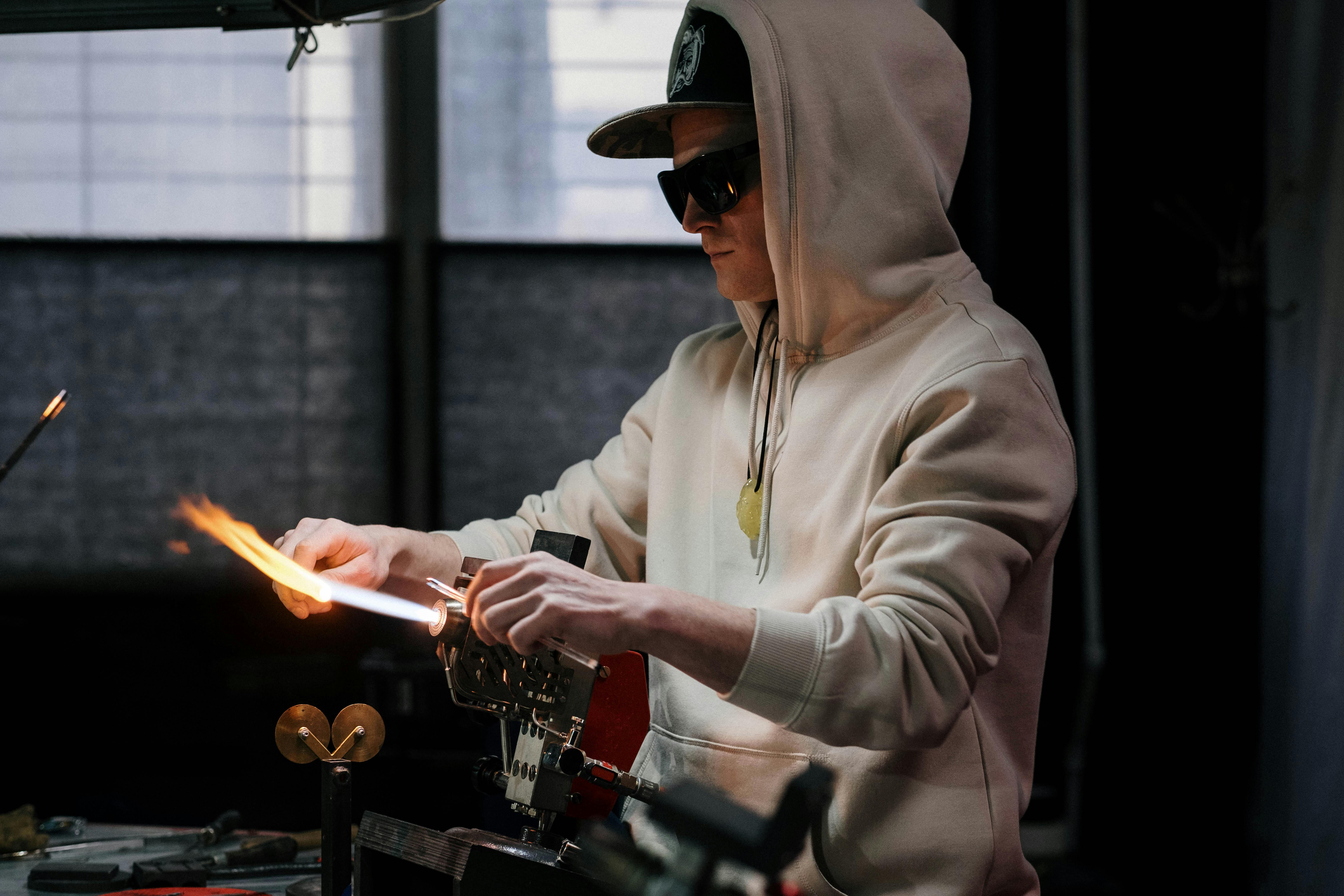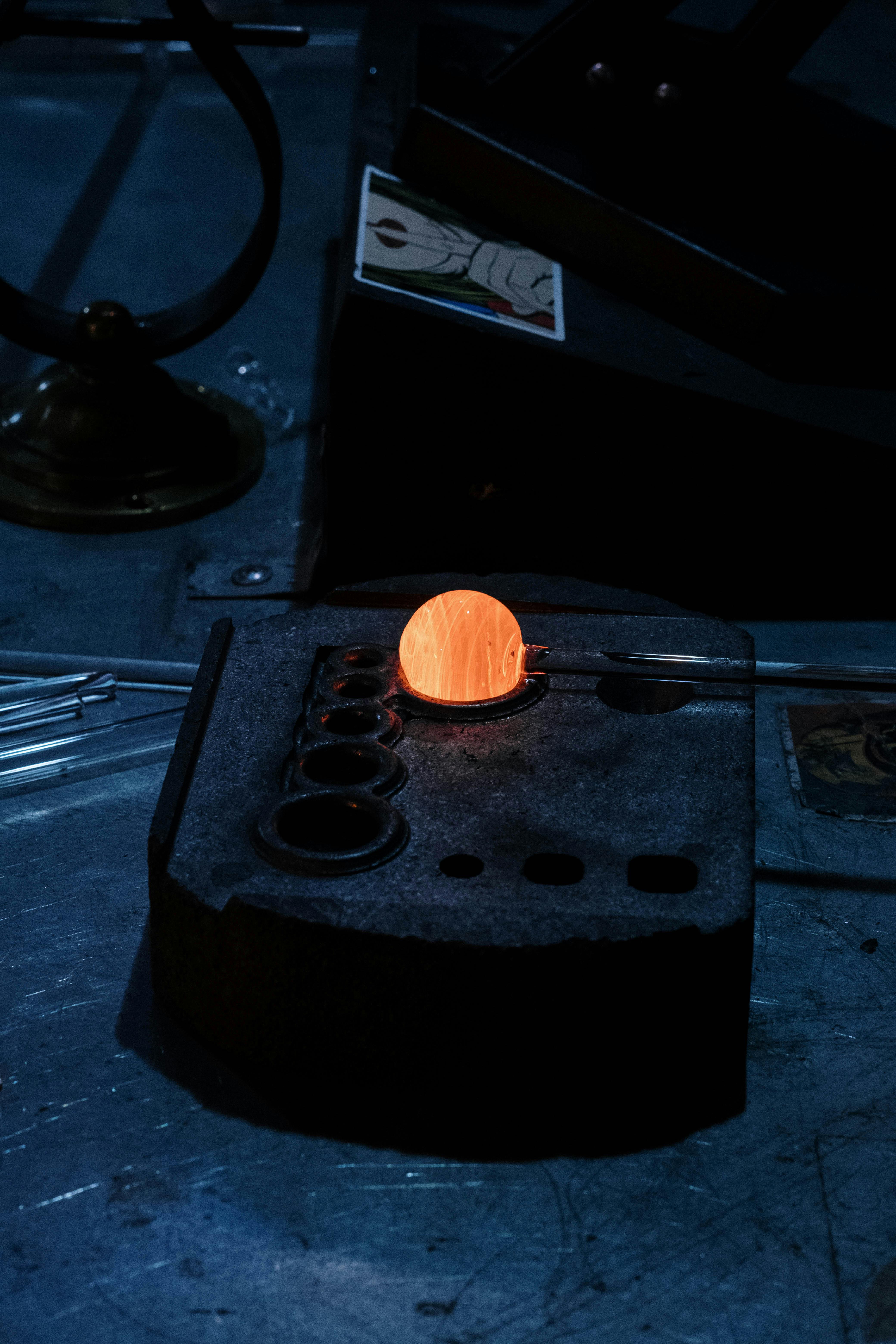Stepping into the world of glassblowing is like opening a door to a realm where the alchemy of heat, breath, and creativity meld together to forge stunning works of art. My journey into the heart of glassblowing workshops has unveiled a fascinating process that combines ancient techniques with modern artistry, culminating in pieces that are as unique as the artists themselves. From the initial gathering of molten glass to the final, intricate adjustments that define a piece’s character, I’ve had the privilege of witnessing firsthand how these luminous creations come to life, offering me a rare glimpse behind the scenes of crafting glassblowing masterpieces.

History of Glassblowing
Origins in Ancient Rome
Glassblowing and I have something in common: we both have our roots deeply entangled in history, specifically, ancient Rome. It fascinates me how this ancient craft, dating back to the 1st century BCE, evolved from a rudimentary form of creating glass containers to an intricate art form. The Romans were not the inventors of glass, but they were the innovators who popularized glassblowing, making glassware more available for everyday use.
Evolution of Techniques
Over the centuries, glassblowing techniques have morphed and evolved significantly. What started with a simple blowpipe turned into a complex dance of tools, temperatures, and techniques. By the Middle Ages, Venice became the epicenter of glassblowing, with Murano glassmakers taking the lead. Their secrets were so closely guarded that leaving the island with knowledge of the craft was forbidden under penalty of death. Fast forward to the Renaissance, and you see glass art becoming more decorative, showcasing not just the utility but the sheer beauty of glass.
Famous Historical Glass Artworks
Speaking of beauty, how can I not mention the famous historical glass artworks that have left me awestruck? The Portland Vase, a cameo glass piece from ancient Rome, is a masterpiece of detailed artistry. Similarly, the stained glass windows of Gothic cathedrals, such as those in Chartres, France, are breathtaking in their color and storytelling. These works not only showcase the technical skills of their creators but also the boundless possibilities of glass as a medium for art.
Elements of Glassblowing
Materials Used
Diving into glassblowing, one quickly learns that the materials used are as important as the skill itself. The primary material is silica sand, which, when heated to high temperatures, becomes glass. Additives like soda lime lower the melting point, while various metal oxides create vibrant colors.
Tools Required
The tools of the trade are an extension of myself when I’m working with glass. A blowpipe is essential for introducing air into the molten glass, while jacks help shape it. Tweezers, shears, and paddles are also indispensable, each adding its unique touch to the forming glass.
Different Types of Fire Sources
The heat source used in glassblowing is crucial. Traditionally, wood-fired furnaces were common, but these days, gas and electric furnaces are the norms due to their temperature control. A glory hole, for reheating the piece as it’s worked, and an annealer, for cooling the glass slowly to prevent stress, are also key components of a glassblower’s workspace.

The Glassblowing Process
The Gather
The gather begins the glassblowing process — it’s where I collect the molten glass on the end of the blowpipe. It’s a mesmerizing moment, the first step in bringing a vision to life.
Shaping the Glass
Shaping the glass involves tools and gravity. By turning the pipe, using wooden blocks, and employing wet newspaper pads (yes, newspaper!), I shape the molten glass into its initial form. It’s a dance of fire and dexterity.
Inflating the Glass
Inflating the glass, or “blowing” it, is where the magic happens. A careful breath into the blowpipe brings the creation to life, expanding it into the desired shape. It’s a delicate balance between force and finesse.
Annealing Process
The annealing process is where patience plays its part. The completed piece must be cooled slowly in an annealing oven to prevent it from shattering. This process can take hours or even days, depending on the piece’s size and thickness.
Types of Glassblowing Techniques
Free-Blowing
Free-blowing is the most traditional form of glassblowing, relying solely on the blower’s skill and breath to shape the glass. It’s spontaneous and organic, each piece unique in its form.
Mold-Blowing
Mold-blowing offers a contrast by introducing a mold into which the glass is blown. This technique allows for more uniform shapes and intricate patterns but requires a mastery of timing to perfect.
Overlay Techniques
Overlay techniques involve layering different colored glasses on top of one another. By selectively removing layers, artists create depth and patterns within the glass, a testament to their precision and planning.
Graal Techniques
Graal techniques are a personal favorite of mine, involving engraving a design into an opaque layer of glass and then encasing it in clear glass. It’s labor-intensive but produces stunningly detailed and multidimensional artwork.
Incalmo Techniques
Incalmo techniques are another fascinating area, joining two or more distinct pieces of glass while still molten to create seamless, multicolored or patterned pieces. It requires a harmonious teamwork between blowers, each expert in their timing and technique.

Creating Color in Glass Art
Types of Glass Colors
The colors in glass art come from the addition of various metal oxides to the base glass mixture. Cobalt gives us a deep blue, while copper can produce a vibrant turquoise or a rich red, depending on how it’s processed.
Methods to Add Color
Adding color to glass can be done in several ways — introducing colored glass chunks into the gather, using color bars or powders, or layering colors over one another. Each method offers a different expressive potential and challenge.
Effects of Heat and Cooling on Color
Heat and cooling dramatically affect the final color of the glass. High temperatures can burn out some colors, whereas slow cooling (annealing) can deepen and stabilize them. Mastering this aspect of glassblowing requires a deep understanding of materials and a bit of intuition.
Safety Precautions in Glassblowing
Proper Attire
When I’m in the studio, safety is paramount. Long sleeves, natural fibers, and eye protection are non-negotiables. And though it might get hot, closed-toe shoes are essential — molten glass does not care about your pedicure.
Handling Hot Materials
Handling molten glass and hot tools demands respect and awareness. Using insulated gloves for short-term handling and always knowing where the hot end of the tool is can save a lot of pain and trouble.
Workshop Safety Protocols
A well-organized workspace is a safe workspace. Keeping the floor clear of obstacles, having proper ventilation, and understanding the operations of gas and electric furnaces all contribute to a safer glassblowing environment.

Challenges in the Glassblowing Process
Managing Heat
Managing the heat in glassblowing is both a challenge and an art. Finding and maintaining the sweet spot where the glass is malleable but not liquid requires skill and constant attention.
Timing and Speed
Good timing and speed are crucial in glassblowing. Glass cools and hardens quickly, so working efficiently and with purpose is necessary. There’s little room for hesitation.
Control and Precision Molding
Achieving control and precision in molding glass is perhaps the most daunting aspect of glassblowing. It demands a synergy of breath, movement, and tool use that comes only with practice and patience.
Success and Recognition in Glassblowing
Glass Art Awards and Competitions
Success in the world of glass art often comes through recognition in competitions and awards. These not only validate an artist’s skill and vision but also open doors to galleries and collectors.
Prominent Glass Artists Worldwide
There are many glass artists whose work leaves me in awe. From Dale Chihuly’s vibrant installations to Lino Tagliapietra’s intricate designs, these artists have elevated glassblowing to stunning heights of creativity and technical brilliance.
Exhibitions and Galleries
Showing work in exhibitions and galleries is a thrilling part of being a glass artist. It’s not just about the exposure but about seeing your work in dialogue with other artists and the public. It’s a reciprocal exchange of inspiration.
Future of Glassblowing
Innovation in Techniques
The future of glassblowing excites me. With new technologies and materials, the possibilities for innovation in techniques are boundless. Artists are constantly pushing the envelope, blending tradition with avant-garde ideas.
Environmental Impacts
Addressing the environmental impacts of glassblowing is becoming increasingly important. Strategies like using sustainable materials, improving furnace efficiency, and recycling glass are steps toward a greener practice.
Benefits of Recycled Glass Art
The benefits of incorporating recycled glass into art are manifold. It not only reduces waste but also adds a layer of storytelling to the artwork. Each piece of recycled glass art carries with it a history, a past life that adds depth to its beauty.
A Day in the Life of a Glassblower
Typical Daily Routine
My day as a glassblower begins with the anticipation of creation. Checking the furnace, preparing the materials, and planning the day’s projects — it’s a routine that never feels mundane. Each day offers new challenges and opportunities for creativity.
Crafting a Masterpiece: Step-by-Step
Crafting a masterpiece is a step-by-step journey of transformation. From the initial gather to the final annealing, each step is imbued with intention and care. It’s not just about the final piece but the process of creation itself.
The Joy in Creativity and Craftsmanship
The true joy in glassblowing comes from the blend of creativity and craftsmanship. It’s about bringing an idea to life, overcoming the challenges that arise, and ultimately creating something beautiful and enduring. There’s nothing quite like the feeling of holding a finished piece, knowing it began as a mere concept in your mind.
In the world of glassblowing, each day is an exploration, each piece a narrative, and the fire is not just a source of heat but a catalyst for transformation. Crafting glassblowing masterpieces is not just my profession; it’s my passion, my art, and my way of leaving a mark on the world, one breath at a time.
